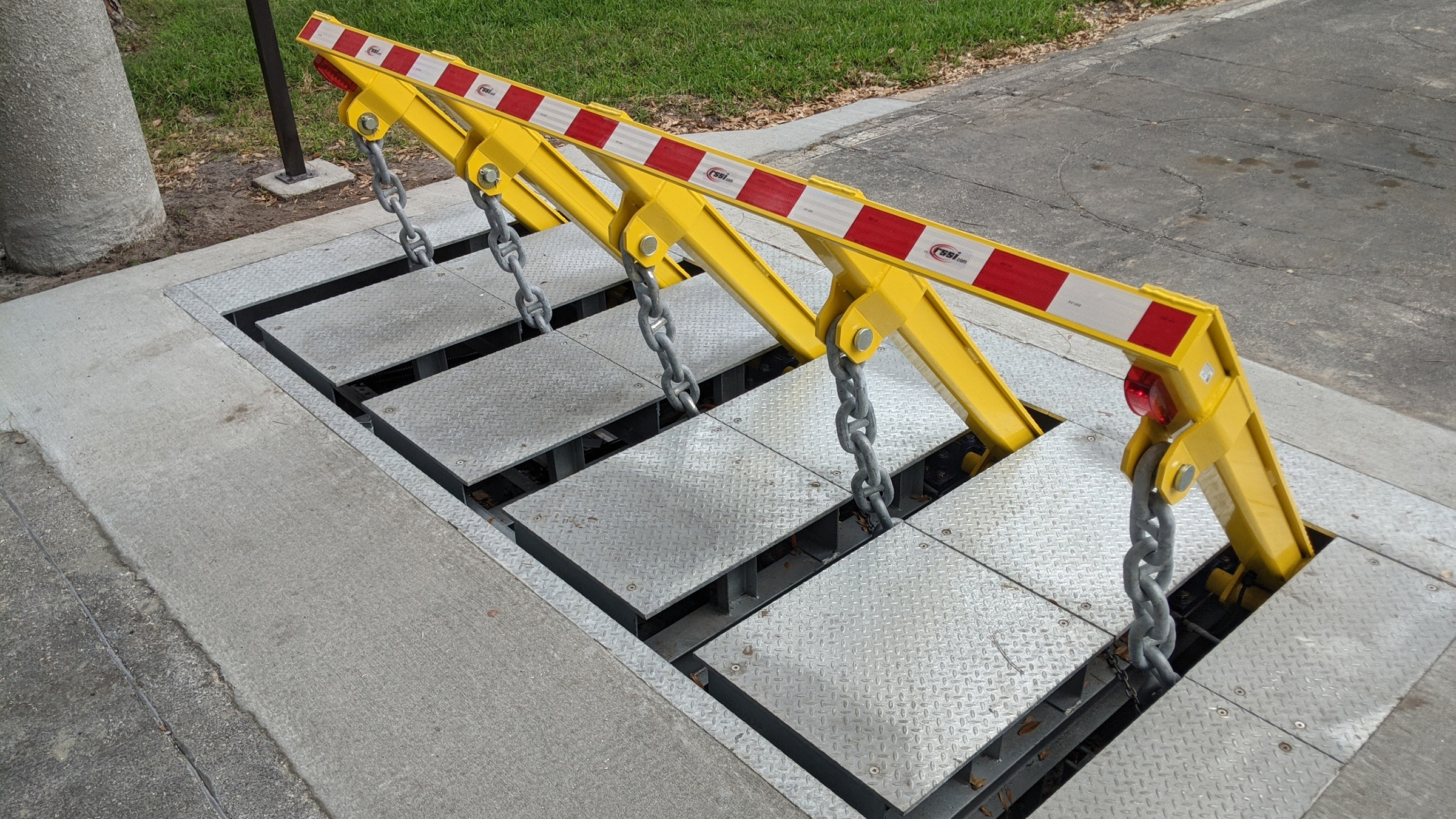The Of Wedge Barriers

In the detailed personification, the barrier 10 consists of a wedge plate 16, which includes a section that is significantly parallel with the surface area 12 when the barrier 10 is in the retracted placement. In various other words, automobiles or individuals might pass over the barrier 10 when the barrier 10 is in the pulled back setting and experience small elevation loved one to the surface area 12 while on the obstacle 10. As the obstacle 10 is placed to the surface area 12 of the foundation 14, collection of debris and other product underneath the barrier might be reduced, and parts of the bather 10 might not be exposed to below quality environments.
Examine This Report about Wedge Barriers
The remaining force applied to
the cam web cam deploy the wedge plate 16 may might provided offered an electromechanical actuator 84 or other actuator. The spring setting up 54 and the actuator 84(e. Wedge Barriers. g., electromechanical actuator)might operate together to convert the web cam and lift the wedge plate 16.
As pointed out above, the springtime assembly 54 exerts a continuous pressure on the cam, while the electromechanical actuator might be managed to exert a variable force on the web cam, thus enabling the training and lowering( i. e., deploying and pulling back )of the wedge plate 16. In certain embodiments, the continuous force applied by the spring setting up 54 may be adjustable. g., electromechanical actuator) is impaired. As will certainly be valued, the springtime assembly 54 might be covered and shielded from debris or various other aspects by a cover plate(e. g., cover plate 68 revealed in FIG. 4) that may be significantly flush with the elevated surface 38 of the foundation 14. As discussed over, in the deployed placement, the wedge plate 16 serves to block accessibility or traveling beyond the barrier 10. As an example, the obstacle 10(e. g., the wedge plate 16 )might block pedestrians or cars from accessing a property or pathway. As discussed over, the obstacle 10 is affixed to the anchor 30 secured within the foundation 14,

front brackets 71. As a result, the affiliation assemblies 72 may pivot and rotate to enable the collapse and expansion of the link settings up 72 during retraction and release of the bather 10. The link assemblies 72 reason movement of the wedge plate 16 to be restricted. For example, if a vehicle is taking a trip in the direction of the released wedge plate 16(e. As an example, in one scenario, the safety and security legs 86 might be expanded duringmaintenance of the obstacle 10. When the safety legs 86 are released, the security legs 86 support the weight of the wedge plate 16 against the surface area 12. As a result, the training device 50 may be shut off, serviced, eliminated, replaced, and so forth. FIG. 5 is partial perspective sight of a personification of the surface-mounted wedge-style barrier 10, highlighting the camera 80 and the camera surface areas 82 of the lifting system 50. Specifically, two web cam surfaces 82, which are described as lower camera surfaces 83, are positioned below the webcam 80. The reduced camera surfaces 83 may be dealt with to the surface 12 (e. As an example, the lower web cam surface areas 83 and the installing plate 85 may form a single item that is secured to the support 30 by bolts or other mechanical bolts. In addition, 2 cam surfaces 82, which are described as top cam surfaces 87, are positioned over the cam 80 and combined to (e. In various other embodiments, intervening layers or plates Read More Here may be positioned in between the surface area 12 and the reduced webcam surface areas 83 and/or the wedge plate 16 and the upper web cam surfaces 87 As pointed out above, the camera
80 converts try this site along the web cam surfaces 82 when the wedge plate 16 is lifted from the retracted placement to the released setting. Additionally, as pointed out over, the springtime assembly 54 (see FIG. 3 )may offer a pressure acting upon the cam 80 in the instructions 102 through springtime pole 58, which might reduce the force the electromechanical actuator 84 is required to relate to the webcam 80 in order to actuate and lift the wedge plate 16. 1 )to the released placement(see FIG. 4). As shown, the web cam 80 includes track wheels 104(e. g., rollers), which contact and translate along the webcam surfaces 82 during operation.
Comments on “The Basic Principles Of Wedge Barriers”